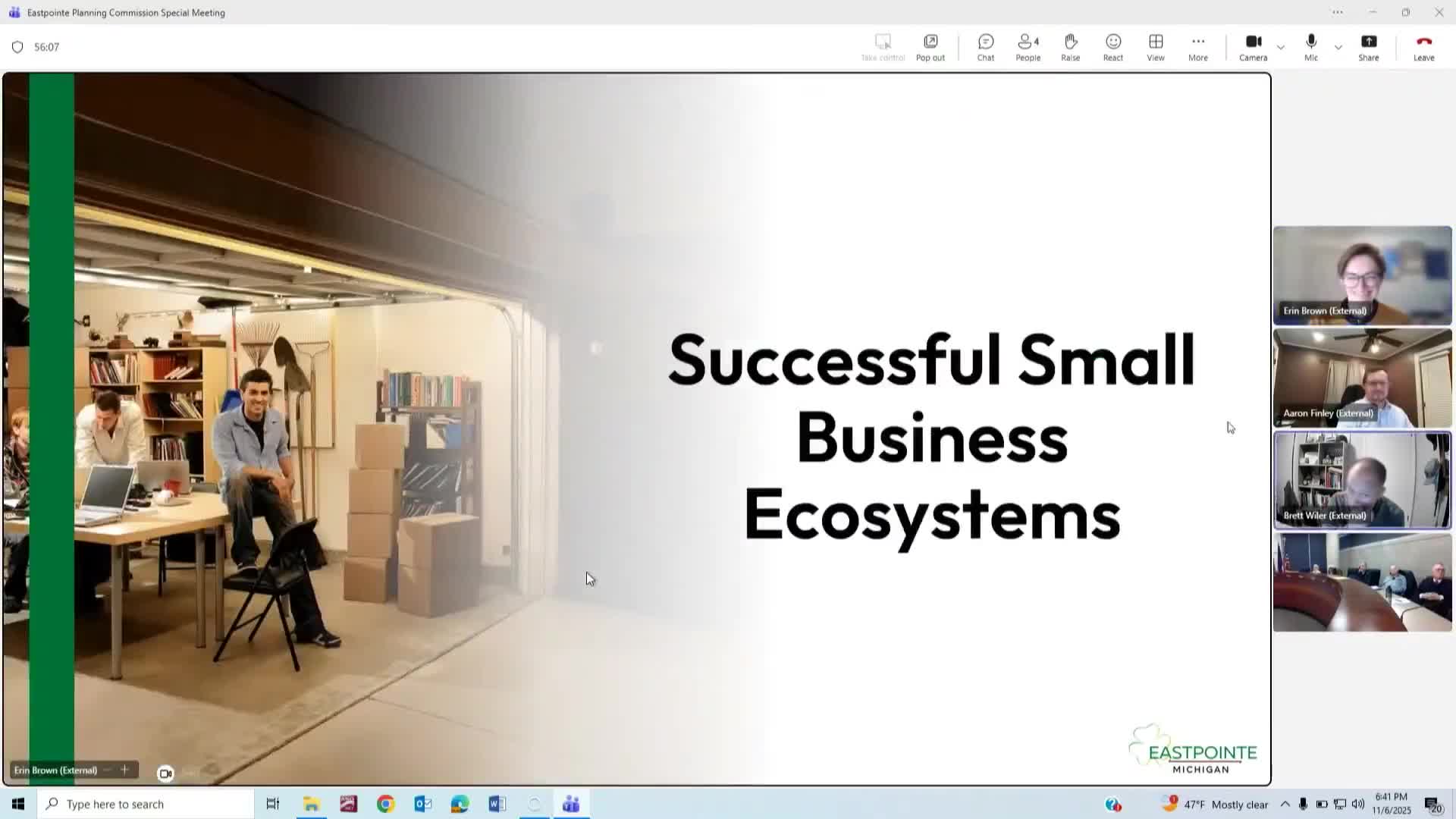AI in Accounting Services May Level Playing Field for Small Businesses – PYMNTS.com

Report on the Impact of Artificial Intelligence on Accounting Services and the Sustainable Development Goals
Introduction: AI as a Catalyst for Sustainable Development in the Accounting Sector
The integration of Artificial Intelligence (AI) into accounting services is creating a paradigm shift, particularly for Small and Medium-sized Businesses (SMBs). This technological advancement is democratizing access to sophisticated financial tools, aligning the industry’s evolution with several key United Nations Sustainable Development Goals (SDGs). By automating traditional processes and providing advanced analytics, AI is not merely a tool for efficiency but a significant driver for inclusive economic growth, innovation, and reduced inequality.
Fostering Decent Work and Economic Growth (SDG 8)
AI’s role in automating routine accounting tasks directly supports SDG 8 by enhancing productivity and promoting sustainable economic growth. By empowering SMBs, the backbone of many economies, AI contributes to creating more resilient and dynamic markets.
Enhancing SMB Productivity and Competitiveness
- Automation of Core Tasks: AI modernizes client accounting services by automating labor-intensive tasks such as data extraction, bookkeeping, payroll, and invoice processing.
- Improved Financial Management: A survey by Bill revealed that 67% of SMB executives believe AI will improve financial forecasting and planning, while 65% see benefits for cost management.
- Proactive Decision-Making: As noted by Kevin Akeroyd, CEO of Sovos, AI shifts accounting from a reactive to a proactive process. This allows SMBs to identify financial issues early and make faster, more informed decisions, strengthening their economic viability.
Elevating the Role of Accounting Professionals
The automation of mundane tasks liberates accounting professionals to engage in higher-value work. Ariege Misherghi of Bill highlights that accountants can now focus on strategic advisory services, applying human judgment to guide SMBs through complex financial decisions. This transition fosters “decent work” by creating more intellectually stimulating and impactful roles, moving away from repetitive manual labor.
Promoting Industry, Innovation, and Reduced Inequalities (SDG 9 & SDG 10)
AI is a cornerstone of innovation (SDG 9) that is actively reducing inequalities (SDG 10) within the business landscape. It dismantles the barriers that have historically given large enterprises a significant advantage over SMBs.
Democratizing Access to Advanced Technology
- Leveling the Playing Field: Experts like Ariege Misherghi and Ben Alarie emphasize that AI gives SMBs access to robust tools once reserved for large corporations with extensive research teams.
- Accessible Expertise: Generative AI platforms, as described by Blue J’s CEO Ben Alarie, provide smaller firms with instant, citation-backed answers to complex tax questions, dramatically reducing manual research time and costs.
- Addressing Industry Shortages: Lisa Huang, SVP at Xero, notes the accounting profession faces a generational shift and talent shortage. AI innovation offers a direct solution by increasing the capacity of overworked and under-resourced professionals.
Framework for Sustainable AI Implementation
While the potential of AI is vast, its successful and sustainable integration depends on a structured approach. Despite the recognized benefits, a Verizon survey indicates that only 21% of SMBs are currently using AI for financial operations, highlighting a significant opportunity for growth.
Prerequisites for Effective AI Adoption
According to Fergal Glynn of Mindgard, two elements are essential for properly harnessing AI in accounting services, ensuring it acts as a trusted and effective partner:
- Clean Data: The quality and integrity of the underlying data are paramount for AI systems to produce accurate and reliable insights.
- Trusted Software and Human Oversight: Modern platforms must offer transparency and allow for verification. A “human eye on critical decisions” is crucial to transform AI from a simple tool into a trusted partner for building a leaner, smarter, and more sustainable business.
Analysis of Sustainable Development Goals (SDGs) in the Article
1. Which SDGs are addressed or connected to the issues highlighted in the article?
-
SDG 8: Decent Work and Economic Growth
- The article focuses on enhancing the productivity and competitiveness of Small and Medium-sized Businesses (SMBs), which are critical drivers of economic growth. By providing SMBs with advanced AI tools, technology is “leveling the playing field,” promoting sustainable economic growth.
- It also addresses the quality of work for accounting professionals. The text notes that many are “overworked and under-resourced” and that AI can shift their roles from “labor-intensive, often manual tasks” to “higher value advisory work,” which aligns with the goal of achieving full, productive, and decent work.
-
SDG 9: Industry, Innovation and Infrastructure
- The central theme is the application of technological innovation (Artificial Intelligence) to modernize the accounting industry. The article details how AI platforms are a form of digital infrastructure that upgrades the technological capabilities of the sector.
- It specifically highlights how this innovation increases the access of small-scale enterprises (SMBs) to advanced financial management tools, which were “historically… costly, complex and ultimately misaligned with the realities of SMB workflows.”
-
SDG 4: Quality Education
- The article implies a need for upskilling and new training within the accounting profession to adapt to technological changes. It points to a “looming talent shortage” and a “generational shift,” suggesting that the current workforce’s skills may not align with future demands. The transition to AI-driven advisory roles requires new technical and analytical skills, connecting to the goal of ensuring relevant skills for employment.
2. What specific targets under those SDGs can be identified based on the article’s content?
-
Target 8.2: Achieve higher levels of economic productivity through diversification, technological upgrading and innovation.
- The article directly supports this target by explaining how AI-driven “automation and data analytics” lead to increased productivity. It states that AI allows firms to produce “higher-quality work with fewer resources” and frees up human capital to focus on “strategic insights,” thereby upgrading the technological capacity of the accounting services sector.
-
Target 8.3: Promote development-oriented policies that support productive activities, decent job creation, entrepreneurship, creativity and innovation, and encourage the formalization and growth of micro-, small- and medium-sized enterprises.
- The entire article is framed around supporting SMBs. It describes how AI gives “small and medium-sized business (SMB) owners access to robust tools once reserved for large enterprises,” directly encouraging their growth and innovation.
-
Target 9.3: Increase the access of small-scale industrial and other enterprises… to financial services… and their integration into value chains and markets.
- The article discusses how AI is making advanced accounting and financial management services more accessible to SMBs. As Ben Alarie states, “Generative AI, especially purpose-built platforms, flip this dynamic” of SMBs being “underserved by legacy tax research tools,” thereby increasing their access to essential business services.
-
Target 4.4: By 2030, substantially increase the number of youth and adults who have relevant skills, including technical and vocational skills, for employment, decent jobs and entrepreneurship.
- The discussion of a “looming talent shortage” and the shift from manual tasks to “high-value advisory services” implies a need for the accounting workforce to acquire new, relevant skills in AI and data analytics to remain effective and secure decent jobs in a changing industry.
3. Are there any indicators mentioned or implied in the article that can be used to measure progress towards the identified targets?
-
Proportion of SMBs using AI for financial operations
- The article provides a direct, quantifiable indicator for technology adoption. It cites a Verizon survey stating that “only 21% are using AI tools to manage accounting and financial operations.” Tracking this percentage over time would measure progress towards Targets 8.2 and 9.3.
-
Perceived utility of AI tools by SMB executives
- The article mentions a survey by Bill where “67% said AI would improve financial forecasting and planning, while 65% said it would help with cost management.” This qualitative data serves as an indicator of the perceived value and potential impact of technology, which influences adoption rates.
-
Reduction in time spent on manual tasks
- An implied indicator is the efficiency gain from automation. The article states that AI is “dramatically reducing manual research time” and automates “rote manual tasks.” This can be measured in hours saved per employee or firm, indicating progress in productivity (Target 8.2).
-
Talent gap in the accounting profession
- The article points to an indicator for Target 4.4 by mentioning that “more practitioners exiting the workforce than entering it, creating a looming talent shortage.” This gap between workforce supply and demand can be measured to assess the need for skills development programs.
4. Summary Table of SDGs, Targets, and Indicators
| SDGs | Targets | Indicators |
|---|---|---|
| SDG 8: Decent Work and Economic Growth | Target 8.2: Achieve higher levels of economic productivity through technological upgrading and innovation. | Reduction in time spent on manual tasks (Implied by “dramatically reducing manual research time”). |
| Target 8.3: Promote policies that support… and encourage the growth of micro-, small- and medium-sized enterprises. | Perceived utility of AI tools by SMB executives (Mentioned: “67% said AI would improve financial forecasting”). | |
| SDG 9: Industry, Innovation and Infrastructure | Target 9.3: Increase the access of small-scale… enterprises… to financial services. | Proportion of SMBs using AI for financial operations (Mentioned: “only 21% are using AI tools”). |
| SDG 4: Quality Education | Target 4.4: Substantially increase the number of youth and adults who have relevant skills… for employment. | Talent gap in the accounting profession (Implied by “more practitioners exiting the workforce than entering it”). |
Source: pymnts.com

What is Your Reaction?
 Like
0
Like
0
 Dislike
0
Dislike
0
 Love
0
Love
0
 Funny
0
Funny
0
 Angry
0
Angry
0
 Sad
0
Sad
0
 Wow
0
Wow
0











































































